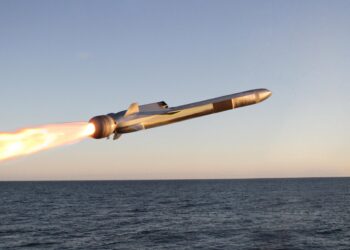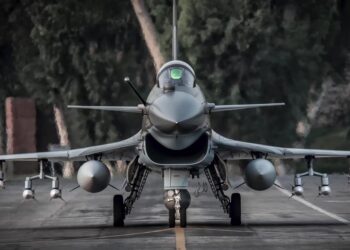Two years ago, Defense Secretary Robert M. Gates traveled throughout Afghanistan, promising deployed troops he would make sure they had everything they needed to accomplish their mission — including more forward-deployed medical capabilities in the event they were wounded.
The goal, he told a group of Marines during a stop at Camp Leatherneck, was “to provide the ‘golden hour’ here in Afghanistan that we have in Iraq,” referring to a standard that gets troops to advanced-level treatment facilities within the first critical 60 minutes of being wounded.
“We hope we don’t need it for any of you,” Gates said of the increased medical capability. “But I want it to be there if it is needed.”
Medical and aeromedical evacuation personnel in Afghanistan at Landstuhl Regional Medical Center in Germany say they’re seeing the results of that initiative in lives saved, reporting that casualties are getting medical treatment faster and closer to the point of injury than ever before.
The military medical system has moved assets closer to the front lines to be more responsive to patient needs, and surgical teams are positioned closer to the troops they support. In addition, an extensive aeromedical evacuation capability quickly moves wounded warriors to progressively more advanced levels of care.
Air Force Lt. Col. (Dr.) Raymond Fang, director of trauma at the Landstuhl medical center, measures the success of the “golden hour” initiative in wounded warriors whose early live-saving interventions helped them survive to receive “Level 4” care in Germany.
“The emphasis in Afghanistan is on trying to place medical assets in such a way that … every patient has access to medical care [and] surgical care within one hour of injury,” he said. “I think that has been achieved. … I think as a strategy it is effective.”
Although weather conditions sometimes hamper getting wounded warriors to advanced medical and surgical care within the first hour of injury, Fang said, the abundance of medical assets in Afghanistan makes this the rare exception.
With additional capabilities and the benefit of lessons learned over nearly a decade of conflict, Air Force Lt. Col. (Dr.) Guillermo Tellez, commander of the Staff Sgt. Heathe N. Craig Joint Theater Hospital here, said the goal is no longer to simply match the standard set during the troop surge in Iraq.
“This is different than in Iraq, and in fact it is actually better, because the expertise at all these levels has gotten better,” he said.
It’s better, medical personnel agree, because it extends to where it can make the biggest difference — on the front lines with initial battlefield care. “It all begins at the point of injury, with those young medics and soldiers and Marines out there,” Tellez said. “That is where care begins.”
Air Force Lt. Col. Kathleen Flarity, commander of aeromedical evacuation at Bagram, agreed.
“It really takes that first responder,” she said. “Every soldier, sailor, airman, Marine knows how to do self-aid [and] buddy care. So if someone is injured, they take care of themselves and they take care of each other.”
At that point, wounded warriors advance to increasingly better-equipped facilities. The battalion aid station, part of the unit it supports, provides first-level medical intervention. From there, wounded warriors are moved quickly to forward surgical teams, which stabilize patients and when required, provide initial life- and limb-saving surgeries.
Within hours, patients arrive at theater hospitals in Bagram or Kandahar, where they receive highly specialized care ranging from neurosurgery to advanced orthopedics to advanced trauma care.
Tellez credits the initial battlefield care provided at the point of injury with enabling 2,300 trauma patients to reach the Craig hospital to receive care during the first three months of 2011 alone. Of those patients, 800 suffered the most severe “Level 1” injuries. Yet, statistics show that patients who live to receive treatment at Bagram have a 98 percent chance of survival, Tellez reported.
Moving patients through this continuum of care wouldn’t be possible without a robust aeromedical evacuation capacity, Flarity said.
That, too, begins at the point of injury, often with Army “Dustoff” helicopter crews — nicknamed for their motto, “Dedicated, Unhesitating Service to Our Fighting Forces” — swooping in to forward operating bases, patrol bases and combat outposts to evacuate wounded troops. Air Force HH-60G Pave Hawk helicopters, operated by Air Force expeditionary rescue squadrons, also support the effort.
Wounded troops ultimately arrive at Bagram, the largest aeromedical evacuation hub in Afghanistan. There, after treatment at the theater hospital, they are flown to Ramstein Air Base, Germany, aboard C-17 Globemaster III, KC-135 Stratotanker and C-130 Hercules aircraft.
During the Vietnam War, Flarity said, it typically took about a month for wounded troops to be transported stateside. Now, after receiving advanced care at Landstuhl, it’s down to as little as three days before they arrive at Walter Reed Army Medical Center in Washington, D.C., the National Naval Medical Center in Bethesda, Md., or Brooke Army Medical Center in San Antonio.
Flarity attributed the speed with which wounded warriors in Afghanistan receive medical care — and the quality of that care — to a well-oiled machine built on experience and a unified focus on the mission.
“We are part of a greater system,” she said, with “everybody in our sister services working collaboratively together to care for that wounded warrior.”










